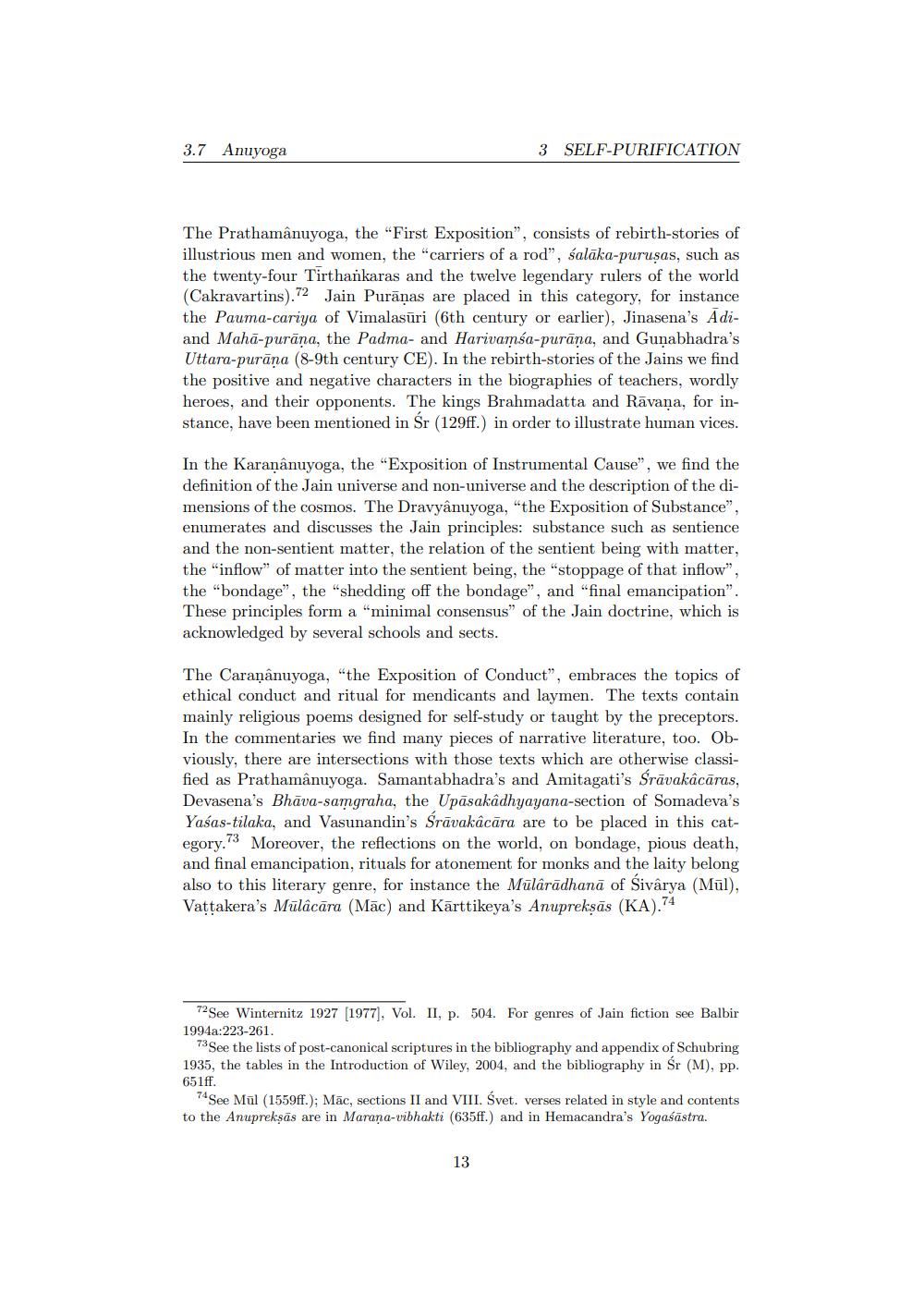________________
3.7 Anuyoga
3 SELF-PURIFICATION
The Prathamânuyoga, the "First Exposition", consists of rebirth-stories of illustrious men and women, the "carriers of a rod", salaka-purusas, such as the twenty-four Tirthankaras and the twelve legendary rulers of the world (Cakravartins).72 Jain Puranas are placed in this category, for instance the Pauma-cariya of Vimalasuri (6th century or earlier), Jinasena's Adiand Maha-purana, the Padma- and Harivamsa-purana, and Gunabhadra's Uttara-purana (8-9th century CE). In the rebirth-stories of the Jains we find the positive and negative characters in the biographies of teachers, wordly heroes, and their opponents. The kings Brahmadatta and Ravana, for instance, have been mentioned in Śr (129ff.) in order to illustrate human vices.
In the Karanânuyoga, the "Exposition of Instrumental Cause", we find the definition of the Jain universe and non-universe and the description of the dimensions of the cosmos. The Dravyânuyoga, "the Exposition of Substance", enumerates and discusses the Jain principles: substance such as sentience and the non-sentient matter, the relation of the sentient being with matter, the "inflow" of matter into the sentient being, the "stoppage of that inflow", the "bondage", the "shedding off the bondage", and "final emancipation". These principles form a "minimal consensus" of the Jain doctrine, which is acknowledged by several schools and sects.
The Caraṇânuyoga, "the Exposition of Conduct", embraces the topics of ethical conduct and ritual for mendicants and laymen. The texts contain mainly religious poems designed for self-study or taught by the preceptors. In the commentaries we find many pieces of narrative literature, too. Obviously, there are intersections with those texts which are otherwise classified as Prathamânuyoga. Samantabhadra's and Amitagati's Sravakācāras, Devasena's Bhava-samgraha, the Upasakadhyayana-section of Somadeva's Yasas-tilaka, and Vasunandin's Śravakâcāra are to be placed in this category. 73 Moreover, the reflections on the world, on bondage, pious death, and final emancipation, rituals for atonement for monks and the laity belong also to this literary genre, for instance the Mulâradhana of Śivârya (Mūl), Vaṭṭakera's Mulácara (Mac) and Kärttikeya's Anupreksäs (KA).74
72 See Winternitz 1927 [1977], Vol. II, p. 504. For genres of Jain fiction see Balbir 1994a:223-261.
73 See the lists of post-canonical scriptures in the bibliography and appendix of Schubring 1935, the tables in the Introduction of Wiley, 2004, and the bibliography in Śr (M), pp.
651ff.
74 See Mül (1559ff.); Mac, sections II and VIII. Śvet. verses related in style and contents to the Anuprekṣās are in Maraṇa-vibhakti (635ff.) and in Hemacandra's Yogaśāstra.
13




